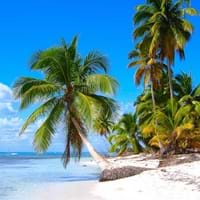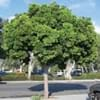Life Span
Perennial
Perennial
Type
Tree
Fruit, Palm or Cycad, Tree
Origin
North America, United States, Northeastern United States, Mid-Atlantic United States, Southeastern United States, North-Central United States, Central United States, South-Central United States, Canada
Not Available
Types
Autumn Flame, October Brilliance, Tiliford
Not Available
Habitat
Forests, Wide range of ecological site
Humid climates, sandy seeps, shores, tropical environments
USDA Hardiness Zone
3-9
5-12
Sunset Zone
A2, A3, 1a, 1b, 2a, 2b, 3a, 3b, 4, 5, 6, 7, 8, 9, 14, 15, 16, 17
H2
Habit
Oval or Rounded
Upright/Erect
Flower Color
Red
Yellow Brown
Flower Color Modifier
Bicolor
Bicolor
Fruit Color
Red, Green, Brown
Green
Leaf Color in Spring
Light Green
Green
Leaf Color in Summer
Green, Dark Green
Golden Green
Leaf Color in Fall
Yellow, Red, Orange, Yellow green, Gold, Dark Red, Orange Red
Green
Leaf Color in Winter
Not Available
Green
Leaf Shape
Maple shaped
Pinnate
Plant Season
Spring, Summer, Fall
All year
Sunlight
Full Sun, Partial Sun
Full Sun, Part sun
Type of Soil
Clay, Loam, Sand
Loam, Sand
The pH of Soil
Acidic, Neutral, Alkaline
Neutral, Slightly Acidic, Slightly Alkaline
Soil Drainage
Average
Well drained
Bloom Time
Early Spring, Spring
Not Available
Tolerances
Wet Site, Soil Compaction
Salt
Where to Plant?
Ground
Ground
How to Plant?
Seedlings, Vegetative Reproduction
Seedlings, Transplanting
Plant Maintenance
Medium
Medium
Watering Requirements
Water Deeply, Water when top layer of soil becomes dry
Reduce watering during fall, Water daily during growing season, Water frequently while growing
In Summer
Lots of watering
Lots of watering
In Spring
Moderate
Moderate
In Winter
Average Water
Average Water
Soil pH
Acidic, Neutral, Alkaline
Neutral, Slightly Acidic, Slightly Alkaline
Soil Type
Clay, Loam, Sand
Loam, Sand
Soil Drainage Capacity
Average
Well drained
Sun Exposure
Full Sun, Partial Sun
Full Sun, Part sun
Pruning
Remove dead branches, Remove dead leaves
Cut limbs, Remove dead branches
Fertilizers
General garden fertilizer, No need to fertilize every year
Nitrogen, Phosphorous, Potassium, slow-release fertilizers
Pests and Diseases
Anthracnose, Bleeding canker, Decline, Fomes root rot, Ganoderma root rot, Laetiporus root rot, Leaf spot, Powdery mildew, Tar spot, Verticillium Wilt
Bud rot, Cadang-cadang, Coconut bug, Coconut foliar decay, Coconut scale, Ganoderma butt rot, Gray leaf blight, Lethal bole rot, Lethal yellowing, Mealybugs, nutfall, Red ring nematode, Stem bleeding disease
Plant Tolerance
Soil Compaction, Wet Site
Salt
Flowers
Insignificant
Yes
Flower Petal Number
Single
Single
Foliage Texture
Medium
Fine
Foliage Sheen
Matte
Matte
Attracts
Not Available
Not Available
Allergy
breathing problems, Eczema, flushing of face, Hives, Low blood pressure, Oral cavity, Rapid Heartbeat, Runny nose, Watery eyes
Abdominal pain, Anaphylaxis, cramps, Mouth itching, Nasal Congestion, Nausea, Runny nose, Skin irritation, Throat itching
Aesthetic Uses
Showy Purposes
Beautification, Landscape Designing, Showy Purposes
Beauty Benefits
Not Available
Good for skin, Good for the Scalp, Hair Conditioner, Heals Damaged Hair, Makes Hair Silkier, Making cosmetics, Removes dandruff, Restores Hair Colour
Environmental Uses
Air purification, Wildlife
Air purification, No fertilizer, pesticides, or herbicides needed, Wildlife
Medicinal Uses
Not Available
Antibacterial, anti-cancer, Antifungal, Antioxidants, Antiviral, Digestion problems, Heart problems, Immunity, Skin Disorders, Weight loss
Part of Plant Used
Whole plant
Whole plant
Other Uses
Edible syrup, Used as Ornamental plant
Air freshner, Animal Feed, Application in Furniture, Application in Handicrafts, For making oil for cosmetics, Oil is used for aromatherapy, Traditional medicine, Used as a nutritious food item, Used as a vegetable oil
Used As Indoor Plant
Yes
No
Used As Outdoor Plant
Yes
Yes
Garden Design
Feature Plant, Shade Trees, Street Trees
Edible, Feature Plant, Fruit Tree, Landscape, Tropical
Botanical Name
ACER rubrum
Cocos nucifera
Common Name
Northern Red Maple, Red Maple
Coconut Palm, coconut tree
In Hindi
लाल मेपल के पेड़
नारियल का पेड़
In German
Red Maple Tree
Kokospalme
In French
Red Maple Tree
Cocotier
In Spanish
Árbol de arce rojo
El cocotero
In Greek
Red Maple Tree
καρύδας δέντρο
In Portuguese
Árvore de bordo vermelho
Coqueiro
In Polish
Red Maple Tree
Drzewo kokosowe
In Latin
Rubrum Maple ligno
dolor ligno
Phylum
Magnoliophyta
Magnoliophyta
Class
Magnoliopsida
Liliopsida
Order
Sapindales
Arecales
Family
Aceraceae
Aceraceae
Clade
Angiosperms, Eudicots, Rosids
Angiosperms, Commelinids, Monocots
Tribe
Not Available
Cocoeae
Subfamily
Not Available
Arecoideae
Number of Species
Not Available
Not Available
Properties of Red Maple Tree and Coconut Tree
Wondering what are the properties of Red Maple Tree and Coconut Tree? We provide you with everything About Red Maple Tree and Coconut Tree. Red Maple Tree doesn't have thorns and Coconut Tree doesn't have thorns. Also Red Maple Tree does not have fragrant flowers. Red Maple Tree has allergic reactions like breathing problems, Eczema, flushing of face, Hives, Low blood pressure, Oral cavity, Rapid Heartbeat, Runny nose and Watery eyes and Coconut Tree has allergic reactions like breathing problems, Eczema, flushing of face, Hives, Low blood pressure, Oral cavity, Rapid Heartbeat, Runny nose and Watery eyes. Compare all the properties and characteristics of these two plants. Find out which of these plant can be used as indoor plant. If you are interested to decorate your house and garden, find out aesthetic uses, compare them and select the plant which will beautify your surrounding. Along with beautification, try comparing medicinal and edible uses of Red Maple Tree and Coconut Tree and you can choose the plant having best and most benefits.
Season and Care of Red Maple Tree and Coconut Tree
Season and care of Red Maple Tree and Coconut Tree is important to know. While considering everything about Red Maple Tree and Coconut Tree Care, growing season is an essential factor. Red Maple Tree season is Spring, Summer and Fall and Coconut Tree season is Spring, Summer and Fall. The type of soil for Red Maple Tree is Clay, Loam, Sand and for Coconut Tree is Loam, Sand while the PH of soil for Red Maple Tree is Acidic, Neutral, Alkaline and for Coconut Tree is Neutral, Slightly Acidic, Slightly Alkaline.
Red Maple Tree and Coconut Tree Physical Information
Red Maple Tree and Coconut Tree physical information is very important for comparison. Red Maple Tree height is 1,220.00 cm and width 1,220.00 cm whereas Coconut Tree height is 2,900.00 cm and width 700.00 cm. The color specification of Red Maple Tree and Coconut Tree are as follows:
Red Maple Tree flower color: Red
Red Maple Tree leaf color: Light Green
Coconut Tree flower color: Yellow Brown
- Coconut Tree leaf color: Green
Care of Red Maple Tree and Coconut Tree
Care of Red Maple Tree and Coconut Tree include pruning, fertilizers, watering etc. Red Maple Tree pruning is done Remove dead branches and Remove dead leaves and Coconut Tree pruning is done Cut limbs and Remove dead branches. In summer Red Maple Tree needs Lots of watering and in winter, it needs Average Water. Whereas, in summer Coconut Tree needs Lots of watering and in winter, it needs Average Water.





